Hyundai Tucson Hybrid review
This modern hybrid has the ingredients to see off the best-selling SUV in Australia, including a new approach to family driving.
New Cars
Don't miss out on the headlines from New Cars. Followed categories will be added to My News.
Like a newborn arriving past its due date, Hyundai’s new Tucson is a welcome sight for parents. The hybrid SUV has a “baby mode” that is intended to help soothe little ones.
The feature smooths out throttle and brake inputs to reduce the amount of front-to-rear pitching when on the move.
The hope is that kids won’t be shaken awake by less than silky driving by their parents. The system could also help to reduce car sickness.
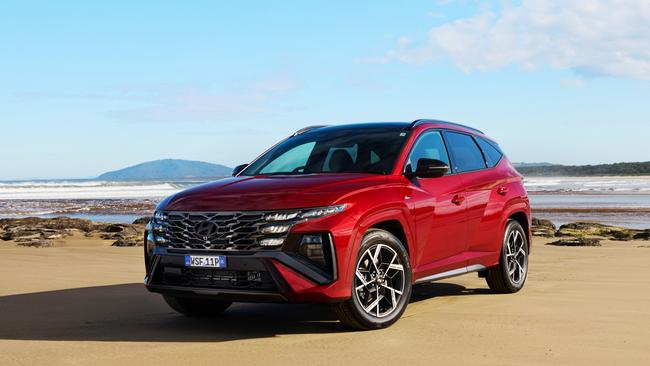
Hyundai hopes the tech might just prove an added incentive for couples picking out a new SUV.
The new Tucson Hybrid is something of a late arrival itself. It hits showrooms five years after Toyota’s RAV4 Hybrid conquered this class.
Hyundai hopes to woo customers away from the bestseller with short wait times and a long equipment list.
Hyundai chief operating officer John Kett said the hybrid model represented “a real opportunity for us”, given the popularity of hybrids.
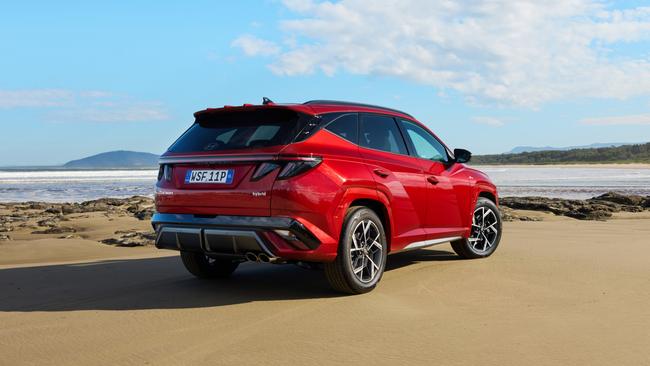
The Tucson Hybrid blends a 1.49kWh battery and 47.7kW electric motor with a turbocharged 1.6-litre four-cylinder engine good for 132kW and 264Nm, returning combined peaks of 172kW and 367Nm using 5.3L/100km of regular unleaded.
Those are good numbers.
It uses a little more fuel than Toyota’s RAV4 Hybrid to make more power, which feels like a fair trade.
The Toyota is a little cheaper, priced from $47,000 drive-away to $64,500 drive-away, while the more modern Hyundai ranges from $50,000 to $66,500 drive-away. Folks weighing up the Hyundai and Toyota will note that the Tucson costs an average of $408 per year to service for the first five years, compared with the RAV4’s $260.
Entry-level models have a 12.3-inch infotainment screen with wireless charging and wireless smartphone mirroring.
Safety is accounted for by seven airbags – including one between the driver and front passenger – along with the usual array of auto emergency braking, blind-spot monitoring and lane-keeping assistance features. In response to criticism about the incessant beeping that accompanies modern driver aids, Hyundai has made it easier to mute the array of alerts.
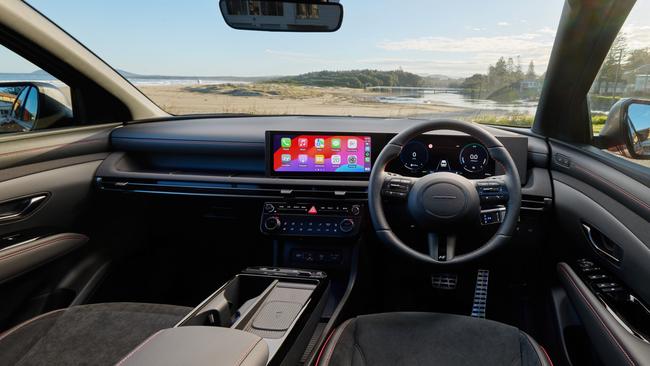
Mid-grade Elite versions add handy features such as heated leather seats and a powered tailgate. Hyundai expects cost of living pressures to push people away from the sunroof, Bose stereo and heated rear seats of the range-topping Tucson Premium. But a lot of people are tipped to add a sporty “N-Line” pack with 19-inch wheels, a body kit and 12.3-inch digital dashboard to their car.
While Toyota has gone hybrid-only with the RAV4 (and many other models), Hyundai continues to offer regular petrol and turbo-petrol motors in the Tucson.
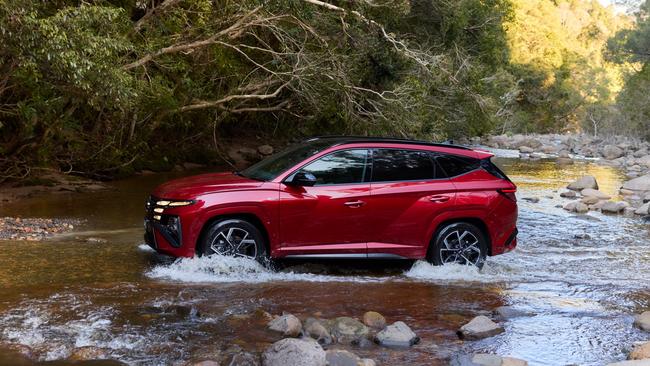
Entry-level models priced from about $43,500 drive-away have a 2.0-litre naturally aspirated engine and six-speed automatic transmission that use 8.1L/100km to make 115kW/192Nm. Turbo models priced from about $51,000 drive-away have a 1.6-litre turbo and seven-speed dual-clutch auto that use 6.7L/100km to make 132kW/264Nm in two-wheel-drive trim, or 7.2L/100km if you go all-wheel-drive.
We’ve seen those engines before.
But the hybrid model is new, so that’s what we drove during the Tucson’s launch in the Hunter Valley.

It makes a strong first impression. The open air cabin borrows heavily from Hyundai’s Ioniq 5, presenting as an airy, modern and hi-tech alternative to conservative rivals. It gets better when you press the start button. Smooth and quiet in low-speed running, the Tucson Hybrid operates silently at walking speed.
It’s louder on the road, particularly when the petrol engine is doing the heavy lifting. Hyundai’s claimed 5.3L/100km fuel use should be achievable in the real world. We used less than 7L/100km on a route that included rolling hills and highways that don’t favour hybrid tech.
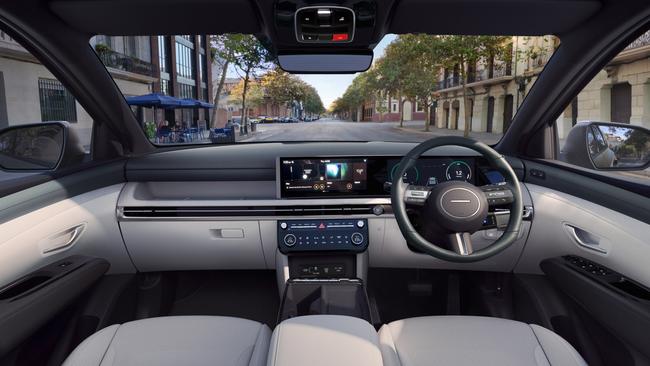
Sweet to steer, with well-modulated controls and a slightly sporty ride and cornering balance, the Tucson feels nimble on the road.
It has the power to trouble the tyres of front-wheel-drive versions (all-wheel-drive is a worthy option for $3500) and sidesteps the occasional clunkiness of the turbo petrol Tucson and its dual-clutch automatic transmission.
VERDICT
4 stars
Hyundai’s hybrid baby was worth waiting for.
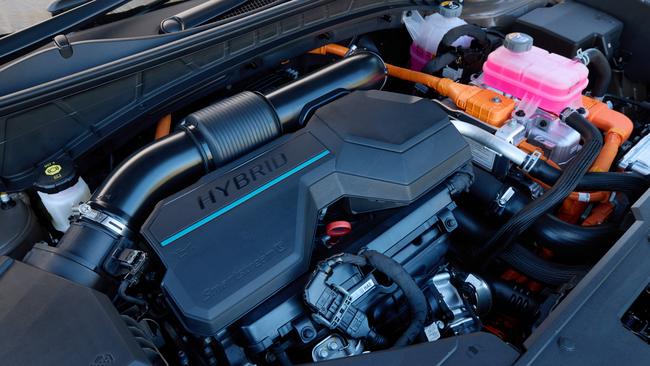
HYUNDAI TUCSON HYBRID
PRICE: About $50,000 drive-away
ENGINE: 1.6-litre four-cylinder turbo hybrid, 172kW and 367Nm
WARRANTY/SERVICE: 5-yr/u’ltd km, $2040 for 5 yrs
SAFETY: Seven airbags, front and rear auto emergency braking, active cruise control, lane-keep assist, blind-spot monitoring, rear cross-traffic alert
THIRST: 5.3L/100km
BOOT: 582 litres
SPARE: Space saver
Originally published as Hyundai Tucson Hybrid review



